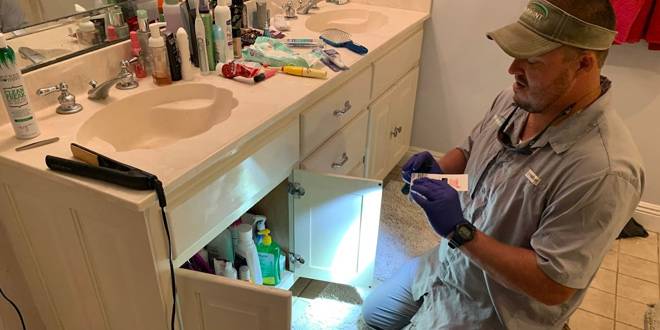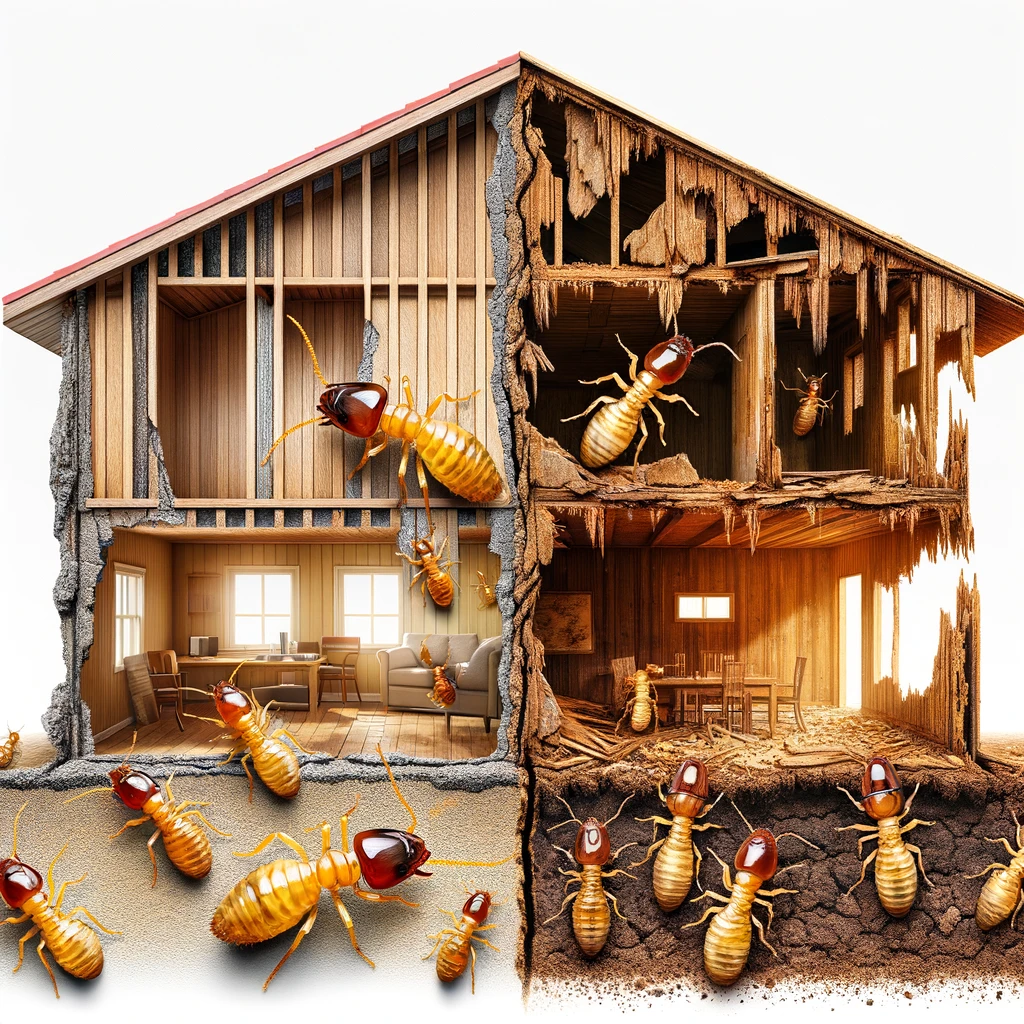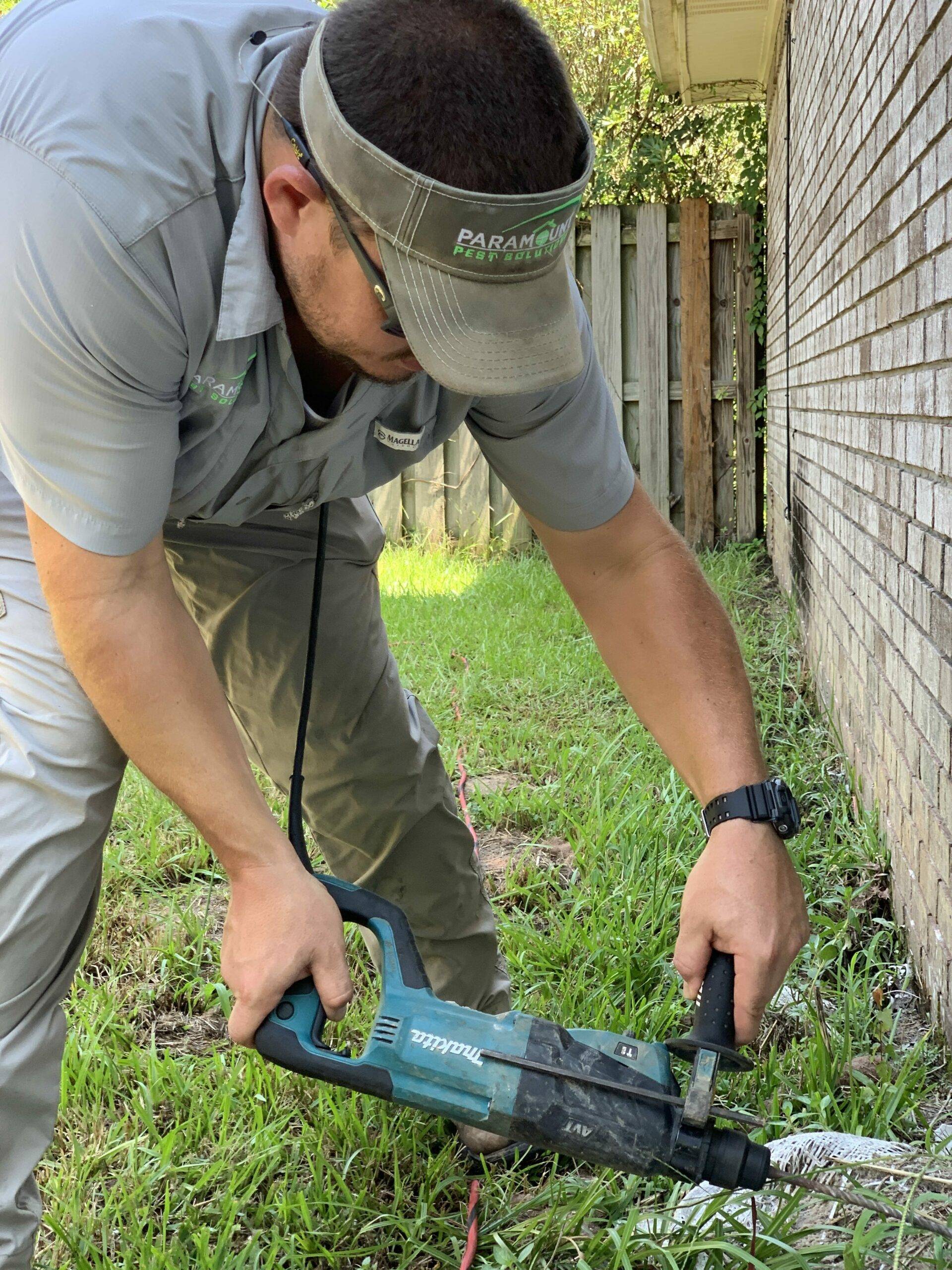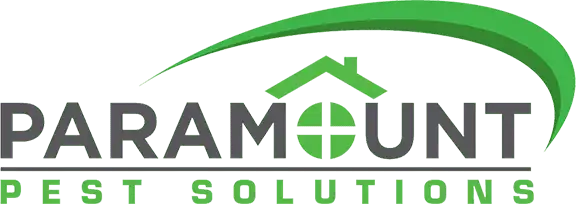
Table of Contents
| Section Title | Overview |
| Introduction: Understanding the Threat of Termites | Introduces the blog’s focus on termite risks specific to Gulfport and the importance of prevention. |
| Termite Species in Gulfport: A Local Guide | Covers the most common types of termites in the Gulfport area and their distinctive traits. |
| Signs of Termite Infestation: Early Detection Tips | Lists visible indicators homeowners can watch for to catch infestations early. |
| Integrated Pest Management (IPM) for Long-term Protection | Explains eco-friendly, effective methods used in IPM and why they’re essential for termite control. |
| Treatment Options for Termite Control | Overview of available treatment plans, including chemical and baiting solutions, and their effectiveness. |
| Termite Prevention Tips for Gulfport Homes | Practical tips to prevent termite invasions through home maintenance and environmental management. |
| Data Table: Termite Infestation Statistics in the Gulfport Area | Table showing termite prevalence and damage costs in the Gulfport area. |
| Fun Facts about Termites | Interesting facts about termites to add some light-hearted information to the topic. |
| FAQs: Common Questions About Termite Control | Provides answers to frequently asked questions about termites, damage, and prevention. |
| Keep Your Gulfport Home Termite-Free with Paramount Pest Solutions | Concludes with a call to action encouraging readers to get in touch with Paramount Pest Solutions for assistance. |
Glossary of Terms
| Term | Definition |
| Integrated Pest Management (IPM) | A pest control approach focusing on prevention, using eco-friendly methods to reduce risks to people and the environment. |
| Infestation | A situation where a pest population, such as termites, has established itself within a home or structure. |
| Baiting System | A termite treatment strategy that uses bait stations to attract and poison termites over time. |
| Subterranean Termites | A common type of termite that lives underground and is known for causing extensive structural damage. |
| Drywood Termites | A termite species that inhabits dry wood and can establish colonies within furniture, walls, and other wood structures without soil contact. |
Introduction: Understanding the Threat of Termites
Termites cause significant damage to homes across the United States, but Gulfport’s warm, humid climate makes it particularly vulnerable to these destructive pests. Homeowners in the Gulfport area need to be vigilant and proactive when it comes to protecting their homes from termites, as their presence can go unnoticed until costly damage is already done. By understanding the threat and implementing preventive measures, you can keep your home safe and reduce the risks of termite damage. This guide covers essential information on identifying termite species, detecting infestations early, and choosing effective treatments to safeguard your property.
Termite Species in Gulfport: A Local Guide
Gulfport’s subtropical climate attracts two primary types of termites: subterranean termites and drywood termites.
- Subterranean Termites
Subterranean termites live underground and build mud tubes to reach wood, feeding on any wood structures they encounter. They are responsible for the majority of termite damage in Gulfport and can cause structural issues if left untreated. - Drywood Termites
Unlike subterranean termites, drywood termites don’t require soil contact to survive. Instead, they inhabit dry wood structures and can infest furniture, walls, and flooring. Although less common than subterranean termites, they can still be a serious threat to homes in Gulfport.
Knowing which termite species you’re dealing with is essential for choosing the right control and prevention measures.

Signs of Termite Infestation: Early Detection Tips
Early detection of termites can save you from costly repairs. Here are some common signs of termite infestation to look out for:
- Mud Tubes: Subterranean termites create mud tubes on walls or foundations to protect themselves while moving from the ground to wood structures.
- Discarded Wings: Winged termites, or swarmers, shed their wings after finding a location to start a new colony. Piles of wings near windows or doors are a warning sign.
- Hollow Sounding Wood: Tap on wooden structures; if they sound hollow, termites may have chewed through them from the inside.
- Frass: Drywood termites leave behind small, pellet-like droppings called frass, often found near infested wood.
By checking for these signs periodically, you can catch an infestation early and limit damage.
Integrated Pest Management (IPM) for Long-term Protection
Integrated Pest Management (IPM) is a sustainable approach to controlling pests like termites, emphasizing prevention, monitoring, and eco-friendly treatment methods. Paramount Pest Solutions implements IPM strategies that reduce risks to both people and the environment, including:
- Prevention-Based Treatments: Methods that deter termites from entering your home in the first place.
- Eco-Friendly Solutions: Less reliance on harsh chemicals, with targeted treatments that minimize impact on the surrounding environment.
- Routine Monitoring and Inspections: Regular checks to catch any signs of termites early and address them before they become problematic.
IPM offers long-term control that balances effective treatment with environmental responsibility. Learn more about Paramount Pest Solutions’ approach to pest control here.
Treatment Options for Termite Control
When dealing with a termite infestation, homeowners can choose from several treatment options:
- Chemical Barriers: A liquid treatment is applied around the home’s perimeter to prevent termites from entering. It’s effective but typically involves professional application.
- Baiting Systems: These systems attract termites to bait stations where they ingest a slow-acting poison and return it to the colony, effectively reducing the population.
- Wood Treatments: Wood can be treated directly with certain chemicals that repel or kill termites upon contact. This is useful for preventing infestations in furniture or smaller wooden items.
Consulting with a pest control specialist helps in determining which method best suits your needs and provides lasting protection.
Termite Prevention Tips for Gulfport Homes
Preventing termites from entering your home in the first place is ideal. Here are some top tips:
- Reduce Wood-to-Ground Contact: Keep wood, such as decks or wooden structures, elevated and avoid direct contact with soil.
- Maintain Gutters and Drainage: Ensure water drains away from your foundation. Excess moisture attracts termites.
- Seal Entry Points: Caulk cracks in your foundation and around pipes to minimize termite entry.
- Limit Mulch Usage: Mulch retains moisture and can attract termites. Keep it at least 15 inches away from your foundation.
These preventive steps can reduce your home’s attractiveness to termites, making it more challenging for them to establish a colony.

Termite Infestation Statistics in the Gulfport Area
| Metric | Gulfport Area | National Average |
| Percentage of Homes with Termite Infestations | 15% | 10% |
| Average Cost of Repairs (per Home) | $3,500 – $8,000 | $3,000 – $7,500 |
| Peak Infestation Season | March – November | May – September |
| Most Common Termite Species | Subterranean Termites | Subterranean Termites |
Fun Facts about Termites
- Termites have been on Earth for over 250 million years!
- A single termite colony can have up to 2 million members.
- Termites eat 24 hours a day, making them tireless pests.
- They play a vital role in nature by breaking down dead trees and enriching soil.
FAQs: Common Questions About Termite Control
- How can I tell if my home has termites?
Look for signs like mud tubes, discarded wings, hollow wood, or frass around your home. - Are there DIY termite treatments?
Some DIY options exist, but professional treatments are more effective, especially for long-term protection. - How often should I have my home inspected for termites?
Annual inspections are recommended, especially in high-risk areas like Gulfport. - What attracts termites to my home?
Moisture, wood-to-ground contact, and cracks in foundations make homes attractive to termites. - Can termites spread from one home to another?
Yes, termites can spread, especially if homes are close to each other and offer food sources.
Keep Your Gulfport Home Termite-Free with Paramount Pest Solutions
Termite protection is an investment in your home’s future. With routine inspections, eco-friendly Integrated Pest Management, and effective treatment options, Paramount Pest Solutions is here to protect your Gulfport home from termites and other pests. Contact us today for a consultation, and take the first step toward a termite-free home!
